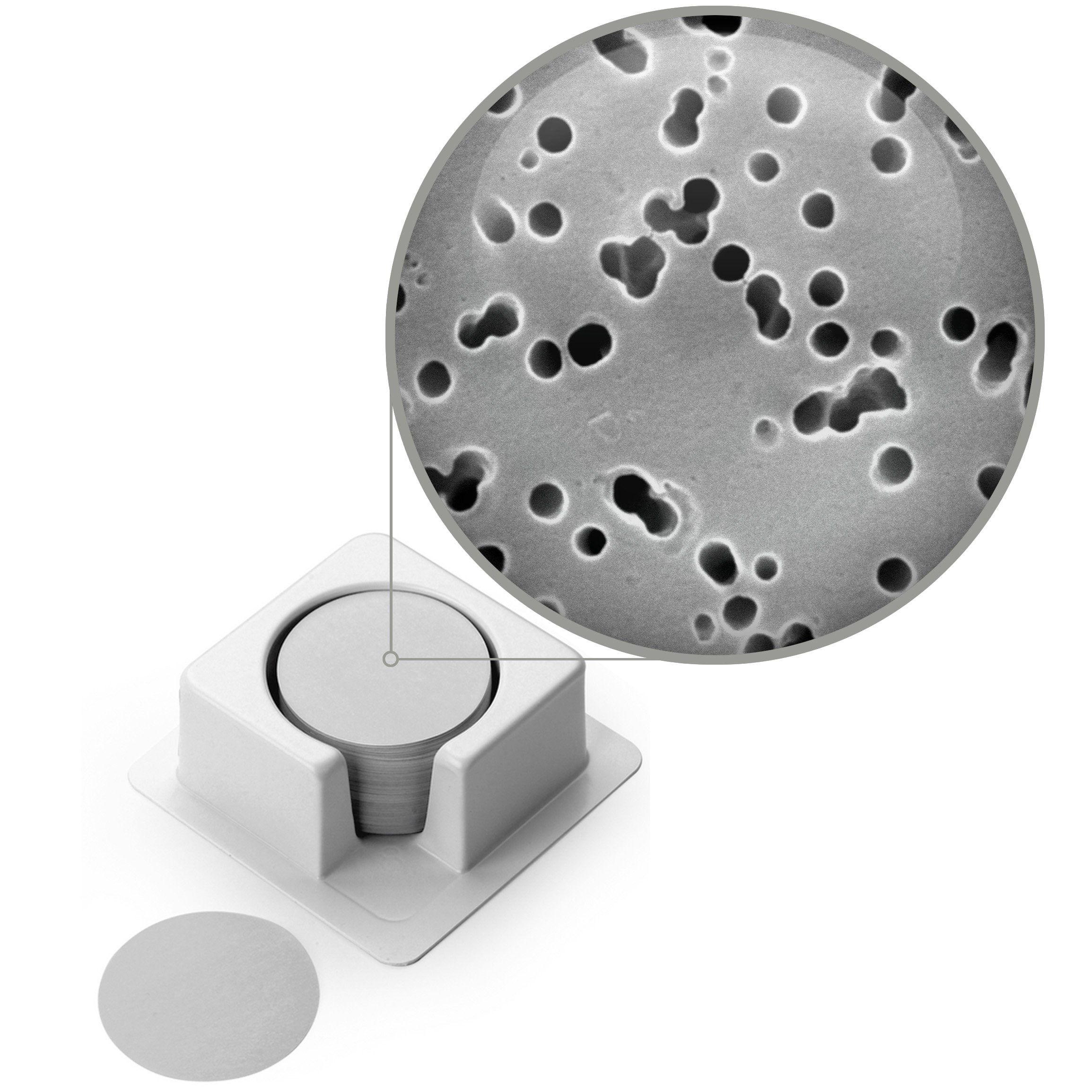
Sterlitech now offers transparent polyester track-etch (PETE) membrane filters with sufficient clarity to perform high resolution optical imaging through the membrane. The key attribute of this material is a special, low density pore structure that mitigates light diffusion and renders the filters highly translucent. Furthermore, the membrane has very uniform thickness and flat surfaces so tissue cultures lie in one focal plane. Our transparent PETE filters are available in the 0.4 µm pore size rating commonly used for cell cultures.
Track-etch membranes have a long history of use in tissue culture experimentation, including use in multiwell plates and cell culture inserts. These membranes can act as scaffolding to create physiological microenvironments promoting growth of attachment-dependent cell cultures. The pore structures in this material allow for nutrient and environmental access to both the free surface (apical) and attached surface (basolateral) of cells. The successful growth of these tissue cultures enables a multitude of investigations into cell attachment, cell growth, cell differentiation, cell migration, and cell to cell signaling. These tissue cultures can also be utilized to model transport, secretion, and diffusion through tissue barriers. They are useful in the study of metastatic behavior of tumor cells, chemotaxis, cytotoxicity, and stem cell induction.
In many tissue culture applications, researchers utilize high resolution optical imaging techniques. Although they are made with transparent base films, the pore structures of conventional polycarbonate and polyester track-etch membrane filters have light scattering properties that result in varying degrees of opacity. As a result, it is not typically possible to perform high resolution imaging through these membrane filters. Investigators are instead forced to perform live imaging from only the free surface of the cell culture or are forced to dissect, fix, and mount their culture samples to facilitate microscopic imaging studies.
With this new and optimized transparent polyester, it is now possible for researchers to image live tissue cultures in high resolution and obtain real-time assessment of cell viability, cell structure, cell interaction, and cell maturity.


![Join Sterlitech at BIO 2024 [Booth #5558]: Exploring the Future of Biotechnology](https://www.sterlitech.com/media/magefan_blog/b4.jpeg)

